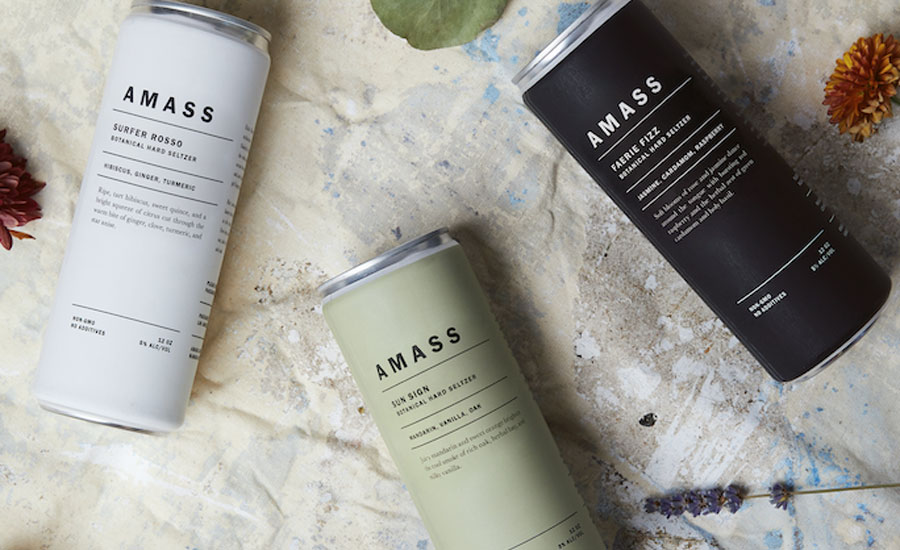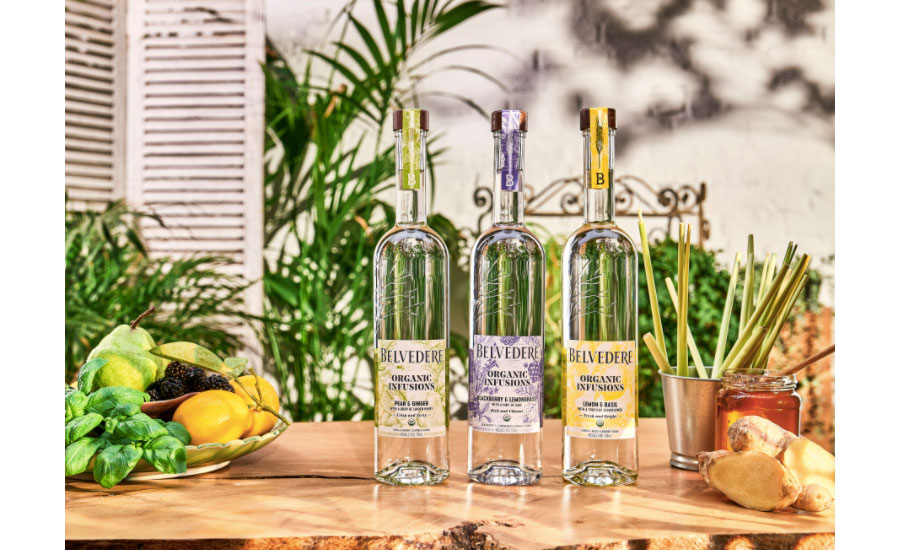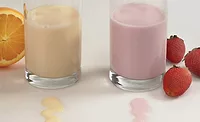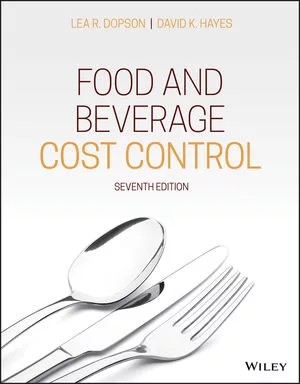R&D Feature
Clean-label formulation challenges beverage-makers
Clean ingredient sourcing, labeling clarity among hurdles

For products today, the path to purchase often is tied to the attributes that brands owners include on food and beverage labels. Santosh Kumar, senior analyst at Rockville, Md.-based Fact.MR, notes that, according to a recent global survey conducted by the nonprofit International Food Information Council (IFIC), most prominent product characteristics sought by consumers on product labels are “natural” and “organic,” followed by “non-GMO” ingredients.
“As such, beverage marketers have started to use these as a differentiation strategy against existing competition,” Kumar says. “And now, it has become pervasive as can also be seen from the fact that nearly 60% of all food and beverage launches that have organic claims also claim to have non-GMO ingredients.”
Micah Greenhill, beverage marketing director at Archer Daniels Midland (ADM), Chicago, notes that the company is seeing increased consumer demand for beverage formulations that deliver functional, plant-based nutrition to help address individual nutrition needs and goals.
“This coincides with the movement toward clean and clear labels, where the more recognizable the ingredients, the better,” he says. “Formulators are responding to these trends by offering beverages featuring botanicals, including flavored waters, energy drinks, tea, carbonated soft drinks and more.”

Image courtesy of AMASS
Vince Cavallini, applications manager of beverage, dairy and convenience foods at Minneapolis-based Cargill, notes that non-GMO ingredients have become table stakes for many of its customers,
“Widespread availability of non-GMO options has made it much easier for Cargill and other ingredient suppliers to deliver on this ask,” he says. “Today, our portfolio includes many non-GMO sweetener and texturizer solutions, including our ViaTech stevia leaf extract and Zerose erythritol, as well as popular texturizers like pectin and carrageenan.”
The definition of clean label
Jennifer Stephens, vice president of marketing at River Falls, Wis.-based Fiberstar Inc., notes that the clean-label definition has evolved over the past few years. She says that while not regulated but open to interpretation, ‘clean label’ initially equated to ingredient familiarity in beverages; today, clean label is a soup of definitions.
“For some segments, it may mean recognizable and short food labels. Others use this catch-all term for allergen-free beverages, which exclude ingredients like soy and dairy,” she explains. “At the same time, clean also means sustainable and/or upcycled in certain circles which encompasses the farm to fork supply chain. And now clean eating also refers to a plant-based diet, which omits animal byproducts like meat and dairy for environmental, health and animal welfare reasons.”
Because of this broad term, manufacturers have had to hone into their consumer base to understand what matters most to them when it comes to clean label or clean eating. At the same time, Stephens notes that this provides beverage manufacturers opportunities to create a point of differentiation as long as they correctly peg their consumer base.
Sheila McWilliams, technical sales manager at Fiberstar, notes that focused industry certifications can help address manufacturers’ needs to verify that an ingredient is meeting a specific standard, which also builds trust and transparency with the consumer if a standard is applied to a finished product.
“For example, Non-GMO Project Verified ensures that a raw material and/or finished product meets the standard for Non-GMO compliance. Having the Non-GMO Project Verified label is crucial for beverage suppliers,” McWilliams says. “Another important challenge, which is now becoming the new normal for consumers and beverage makers, is sustainability. Beverage manufacturers can support this initiative by using the Upcycled Certification. This provides a standard so that the food industry can develop long-lasting practices in raw material and finished manufacturing.”

Image courtesy of Moët Hennessy
Clean-label challenges
Although clean-label ingredients are in high demand, formulating with these solutions has inherent obstacles — namely cost and formulation challenges. Non-GMO products tend to be costlier so it can be challenging for beverate manufactures to maintain the price tag, Fact.MR’s Kumar says.
“With clean-label and non-GMO ingredients, the cost of manufacturing abruptly increases as compared to the conventional beverages,” he explains. “The manufacturers have to work around their profit margins or optimize their distribution routes to reap profits. However, for the manufacturers who target their beverages with non-GMO ingredients to consumers that can afford them, procurement of non-GMO ingredients stands as an issue. GMO crops account for the majority of cultivation as they are less costly and are thus suitable to satiate the needs of a larger proportion of the population.”
Kumar notes that while maintaining a balance between the upstream and downstream network of the value chain, ensuring sufficient profit margins is tough amid growing competition. Manufacturers of clean-label and non-GMO foods and beverages should engage in continuous consumer feedback and address affordability, he adds.
“It becomes essential for the manufacturers to know the priority between health and price,” he says. “A large number of food and beverages businesses in the U.S. suffered significant loss as they could not monitor the changing consumer perception at the ingredient level.”
With the growing demand for non-GMO crops, brands can minimize risk associated with procurement by sourcing from ingredient providers that are nearer to the production unit, Kumar advises.
ADM’s Greenhill notes that another challenge for brands is consumer tension between desiring simplified ingredient lists while also meeting important health goals like immune function, digestive health, energy sustainment and more.
“Nutrient-dense beverages can be more challenging to meet clean-label and non-GMO consumer standards,” he says. “A variety of formulation challenges can pop up when incorporating functional ingredients such as protein or fiber and when reducing or removing ingredients like sugar. For example, fiber and protein can sometimes produce offnotes and gritty texture. Plus, sugar reduction can impact sweetness, flavor and functionality.”
He says that accounting for these issues with maskers and modifiers can mean a longer product label or less recognizable ingredients. Another example is consumer interest in all-natural claims on labels exceeds their desire for a longer shelf life, implying that existing beverage options must meet expectations for perishability. Thus, new offerings promising higher quality and cleaner labels will need to limit processing cues.
“People will not sacrifice an enjoyable sensory experience in health-forward beverages. In fact, 82% of consumers rate taste as highly important in their purchasing decisions,” Greenhill says. “So, ensuring a finished beverage looks and tastes just right is as important as nutritional value and a clean label for consumer buying behavior.”
Clean coloring and sweeteners
Functional ingredients are not the only arena impacted by the demand for clean label. Pam Stauffer, Cargill’s global programs manager, notes that the clean-label environment also has upended traditional sweetener choices.
“In particular, artificial sweeteners have fallen out of fashion as consumers gravitate toward products made with simple, recognizable ingredients. Six in 10 global consumers say no artificial sweeteners is an ‘extremely’ or ‘very important’ statement on food labels,” she says. “Our latest proprietary research suggests that across the board, consumers are very accepting of [stevia]. When compared to 12 of the leading low/no calorie sweeteners, consumers ranked stevia as the most healthful, as well as having the most positive perception on the label.”
Along with preferring clean-label sweeteners, Jeannette O’Brien, vice president at Tarrytown, N.Y.-based GNT, adds that while colors are a vital part of beverages’ appeal, many colorants fall short of consumers’ clean-label expectations. This creates another formulation challenge for some beverage brands.
“GNT’s EXBERRY colors are ideally suited to the modern market because they’re made from non-GMO fruit, vegetables and plants using physical processing methods such as chopping and boiling,” she says. “They can be described on the ingredient list in a way that’s easy for shoppers to understand, too, so they support both clean and clear label declarations.”
Creating beverages using natural colors made from fruit and vegetables requires knowledge and experience, as factors such as pH, water quality and mineral content can influence color shade and performance, she adds. It’s also essential for beverage-makers to understand all the potential ingredient interactions.
“With the right approach, it’s now possible to achieve vibrant shades in almost any beverage application using plant-based colors,” O’Brien says. “As we’ve learned more about the most effective ways to use our colors, it’s expanded the possibilities for creating visually appealing beverages with clean and clear labels. Today, these colors can be used to achieve a vast range of shades in anything from fizzy sodas to plant milks to fruit juice to beers.”
Thriving formulations
With new clean-label beverages entering the marketplace, it’s hard to pinpoint a single, standout product, Cargill’s Cavallini explains. However, he notes those doing well have several commonalities.
“[Products gaining traction] are non-GMO, made with familiar ingredients, and contain no artificial sweeteners. Some go a step further, touting organic credentials and highlighting sustainable, ethical sourcing,” he says. “But to achieve mainstream success, those label-friendly products also must deliver on consumer expectations for taste, mouthfeel and appearance.”
Cavallini also notes one of the biggest advances has been around taste.
“Improved stevia products like our ViaTech stevia leaf extract and EverSweet stevia sweetener are making it possible to remove artificial sweeteners and still create products that taste amazing,” he says. “In particular, our EverSweet sweetener is creating ripples throughout the beverage landscape. The first beverages made with EverSweet have made it to market, and they are doing very well, winning customer and consumer accolades.”
Fact.MR’s Kumar notes that brands thriving in the market have positioned their products well and that it didn’t take much time to gain consumers’ attention.
“Companies have started to project their brands as minimally processed, artisanal and produced in small batches,” Kumar explains. “This is the only innovation that has been winning the trust of consumers when it comes to the authenticity of labeling.”
What’s to come
Fact.MR’s Kumar predicts that going forward products labeled as clean label or non-GMO will experience sustained growth.
“Furthermore, with the growing contribution from ingredient suppliers, non-GMO food and beverage products are expected to replace the conventional products at a faster pace,” he says.
ADM’s Greenhill notes that clean labels with claims such as organic and non-GMO have become a mainstream expectation in all areas of the food and beverage industry, and this likely will continue.
“Today, there’s an even bigger push for recognizable, close-to-nature ingredients on product labels, as shoppers perceive these to be better for themselves and better for the environment,” he says. “According to ADM’s Outside Voice research, 69% of consumers say simple, recognizable ingredients influence their purchasing decisions, and 66% say they are looking for labels with the shortest ingredients list. Our research also finds that over half of consumers are likely to review the nutrition facts and the ingredient lists on beverages.”
On top of that, data in FMCG Gurus “USA Clean Label Survey, 2019” indicates 69% of U.S. consumers found clean-label products appealing when described as “natural, synthetic-free, free from artificial ingredients and containing real ingredients .”
“Beverage shoppers are increasingly scrutinizing product labels to help inform their purchase decisions as they take more proactive steps to seek out offerings that will meet their holistic well-being goals,” he adds.
With ongoing ingredient innovation and clear communication of clean-label specifics, ingredient companies and brands alike look to be paving a clear course for the growth of the category in the years to come.
Looking for a reprint of this article?
From high-res PDFs to custom plaques, order your copy today!







